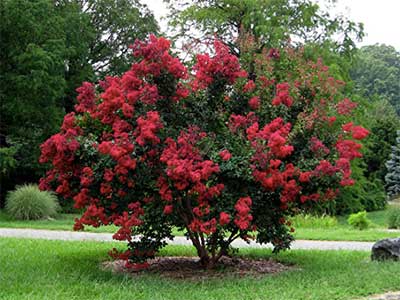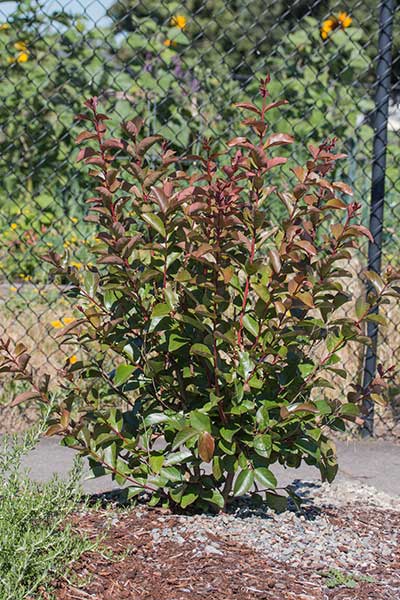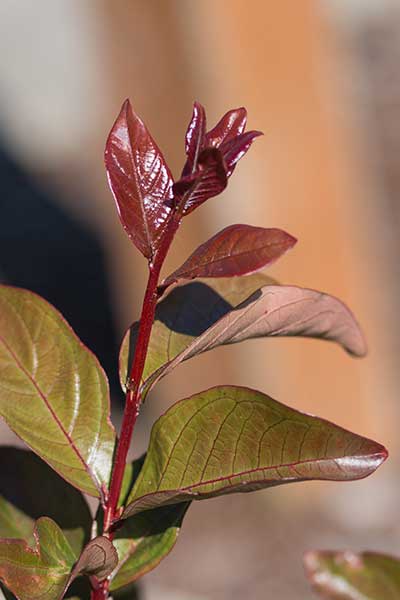Crape Myrtle 'Hopi', 'Cheyenne'
- Scientific Name: crape-myrtle-hopi,-cheyenne
- Garden: Dog Friendly Garden
- Plant Type: Shrub
- Evergreen/Deciduous: Deciduous
- Sun/Shade Exposure: Full Sun
- Moisture Requirements: Moist, well-drained
Plant Information
Characteristics: Crepe myrtles are small trees or shrubs with multi-season interest. Flowers occur in panicles, cone-shaped clusters at branch tips, and resemble crepe paper with their finely crinkled texture. White, pink, red and lavender flowers are available, but beware: flowers described as red are often dark pink, rather than true red. Bloom occurs from July thru September and berries follow.
Leaves appear late in spring, once temperatures are consistently warm. Don’t be surprised if everything else in your yard has leaves before your Crape myrtles; just hold out for a few more weeks and you’ll be rewarded with small red leaves that soon turn green. Several cultivated varieties maintain dark red foliage through summer. Leaves steal the show in autumn, turning gold, orange, red and deep mahogany before falling off to reveal beautiful mottled or peeling cinnamon, tan or gray bark.
Plants are available in a wide range of mature sizes, from dwarf forms maturing at 3-4’ to trees growing to 15-20’.
Light: Crape myrtles love sun and heat. South or west-facing sites with at least eight hours of sun per day is ideal.
Water: Summer watering is important for good flowering and growth — a soaker hose, used once a week for 45 minutes is ideal. Do not plant Lagerstroemia in sites that are soggy during rainy months.
Soil: Many soils in Portland are heavy with clay and full of rocks, but Crepe myrtles are okay with that! Their ropy roots grow through tough clay. They prefer not to be planted in areas that are nutrient rich and well-amended, or in spots that are soggy during rainy months.
Diseases: Powdery mildew is a common problem for Crepe myrtle that can be helped by allowing for proper light, water and soil, increasing air circulation around the plant and avoiding wetting the foliage when watering. Some varieties of Lagerstroemiaare resistant to powdery mildew, but if your plant develops the problem, Serenade Garden is a good choice for fungicide.
Data Source
https://www.portlandnursery.comPlant Photos







